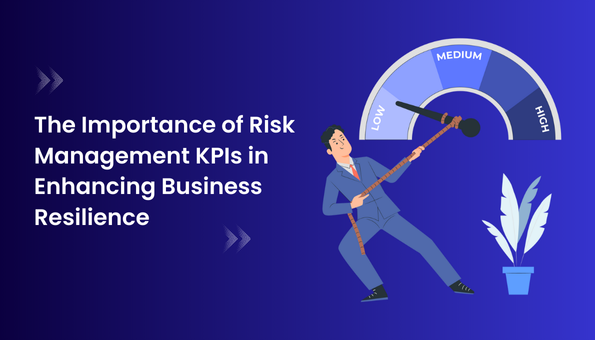The Strategic Importance of Risk Management in Building Competitive Advantage
The Strategic Importance of Risk Management in Building Competitive Advantage
Blog Article
Discovering the Relevance of Risk Management for Effective Decision-Making Techniques
In the detailed world of service, Risk Management arises as a critical consider the decision-making procedure. The ability to determine possible threats and chances, and plan accordingly, can mean the distinction in between success and failing. With tools such as SWOT and PESTEL, organizations are furnished to make enlightened choices, promoting durability and flexibility in an ever-changing environment. Wondering how this works? Allow's unbox the characteristics further.
Understanding the Idea of Risk Management
Risk Management, a crucial part in decision-making, is commonly misconstrued or oversimplified. Risk Management involves disciplined and structured strategies, using data and insightful analyses. From financial unpredictabilities, legal obligations, strategic Management mistakes, to crashes and natural calamities, it addresses different threats - importance of risk management.
The Function of Risk Management in Decision-Making Processes
In the realm of calculated preparation and business operations, Risk Management plays an important duty in decision-making procedures. It helps in recognizing potential risks and unpredictabilities that might influence the success of business objectives. By mapping these risks, business can create methods to alleviate their influence, making sure company continuity and security. Risk Management therefore ends up being an important tool in decision-making, assisting leaders to make enlightened choices based on a detailed understanding of the threats included. It motivates a proactive approach, making it possible for companies to expect and prepare for possible future scenarios. This considerably lowers the possibility of unfavorable consequences, promoting much more efficient and effective decision-making strategies. Risk Management serves as an important component in the decision-making processes of any organization.

How Risk Management Improves Strategic Planning
In the context of tactical planning, Risk Management plays an essential function. Initiating with the recognition of prospective threats, it additionally reaches the implementation of Risk reduction steps. The duty of Risk Management is vibrant but not static, as it requires consistent tracking and adjusting of techniques.
Recognizing Prospective Risks

Executing Risk Mitigation
Having developed the relevance of identifying potential risks, the following action is to discover Risk reduction. This process includes establishing and executing strategies to take care of determined risks properly. It is an important facet of tactical planning as it enhances decision-making by minimizing prospective adverse end results. Risk reduction techniques can range from Risk avoidance, Risk transfer, to run the risk of decrease. Each approach must be tailored to the particular Risk, considering its possible effect and the organization's Risk resistance. Efficient Risk reduction needs a deep understanding find of the Risk landscape and the possible effect of each Risk. This understanding makes it possible for organizations to focus on threats and assign resources properly, making certain that the most significant dangers are dealt with first.
Monitoring and Readjusting Techniques
Though Risk mitigation is a vital action in tactical preparation, constant surveillance and modification of these techniques is equally crucial. This recurring procedure enables organizations to determine new threats and reassess existing ones, making sure the implemented methods remain reliable in the ever-changing organization environment. It also offers an opportunity to review the success of the Risk Management measures, enabling changes to be made where required, more enhancing strategic preparation. Efficient tracking and adjustment need making use of analytics and crucial efficiency indicators (KPIs) to gauge effectiveness. These devices offer beneficial data-driven understandings that can inform strategic decision-making. For that reason, tracking and changing Risk Management methods is an essential part for improving a company's resilience and strategic preparation.
Case Studies: Effective Risk Management and Decision-Making
In the globe of service and financing, effective Risk Management and decision-making often act as the columns of flourishing enterprises. One such entity is an international oil business that alleviated financial loss by hedging against rising and fall oil costs. In one more instance, a technology official statement startup thrived by recognizing and approving high-risk, high-reward approaches in an unpredictable market. A worldwide bank, confronted with regulative uncertainties, efficiently navigated the situation via positive Risk analysis and dynamic decision-making. These instances highlight the value of sharp Risk Management in decision-making procedures. It is not the absence of Risk, yet the Management of it, that frequently separates successful firms from not successful ones. These situations underscore the crucial role of Risk Management in tactical decision-making. importance of risk management.
Tools and Methods for Reliable Risk Management
These devices, such as Risk signs up and warmth maps, help in determining and examining prospective dangers. Risk reaction techniques, an essential element of Risk Management, entail approving, preventing, transferring, or mitigating risks. With these strategies and devices, decision-makers can browse the complicated landscape of Risk Management, thereby facilitating informed and effective decision-making.
Future Trends in Risk Management and Decision-Making Methods
As we check out the huge landscape of Risk Management, it ends up being evident that the strategies and tools utilized today will certainly proceed to develop. The idea of Risk society, where every member of an organization is conscious and entailed in Risk Management, will acquire a lot more prestige. These fads declare a more positive and comprehensive approach towards Risk Management and decision-making.
Final thought

Risk Management therefore becomes a vital device in decision-making, aiding leaders to make educated options based on a comprehensive understanding of the threats entailed. Risk mitigation strategies can vary from Risk avoidance, Risk transfer, to run the risk of reduction (importance of risk management). Effective Risk mitigation requires a deep understanding of the Risk landscape and the prospective effect of each Risk. Risk feedback approaches, a key part of Risk Management, involve accepting, avoiding, moving, or mitigating threats. The idea of Risk society, where every participant of an organization is aware and entailed in Risk Management, will get much more importance
Report this page